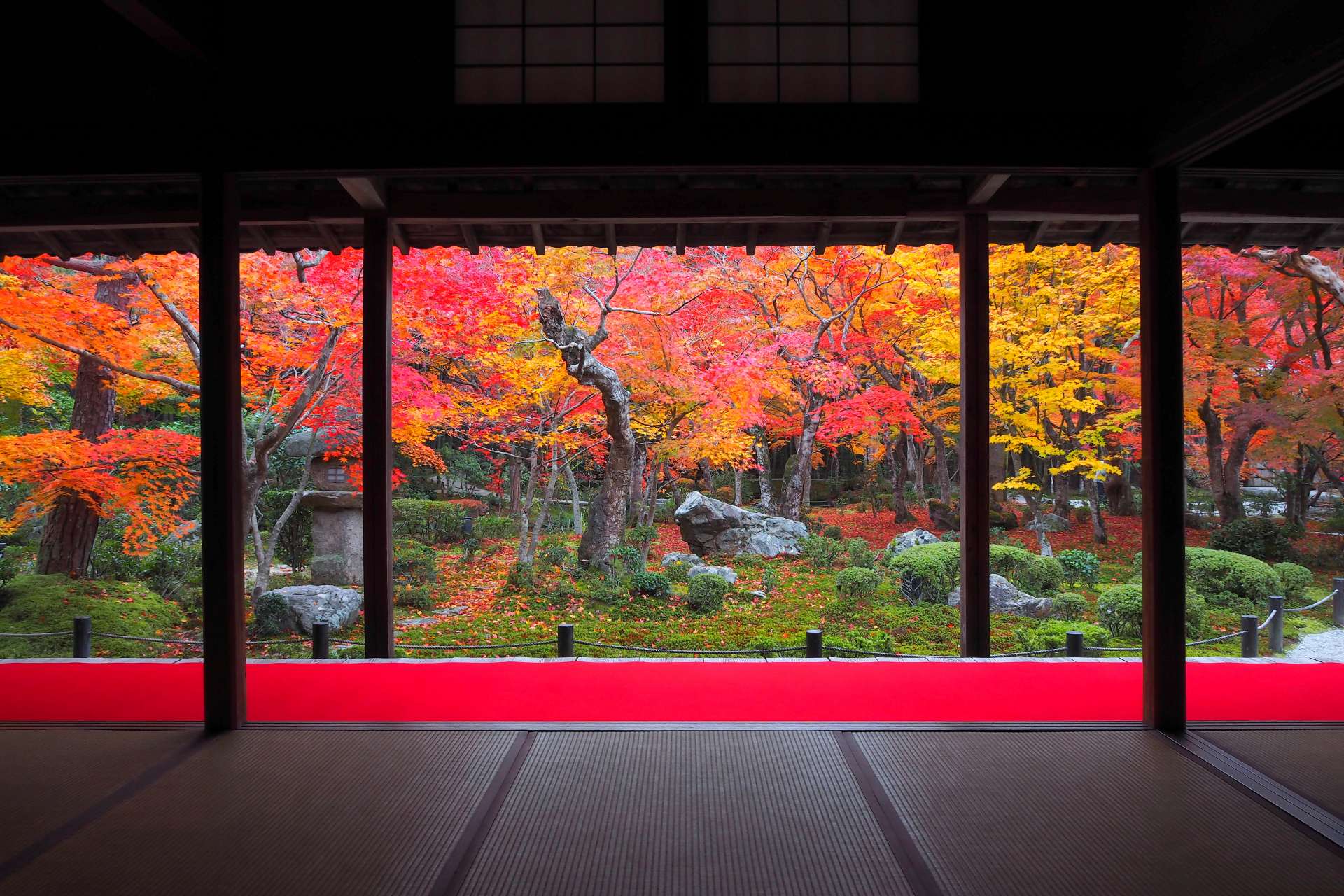這寺院以~十牛之庭、水琴窟、奔龍庭~為著名,來這裡一定要欣賞的景哦~推

Verified [Verified] denotes information that has been published with confirmation of its owing parties.
Enkouji Temple
A historical Zen temple opened by Ieyasu Tokugawa. Popular for its picturesque views of Kyoto City from atop its hills.
Opened in 1601, built by the orders of Tokugawa Ieyasu in Fushimi, Kyoto. After it opened as a school, it relocated to the premises of Shokokuji Temple. In 1667, it relocated again to its current location at Ichichoji Kotani town. Statues said to be created by the monk Unkei are on display, including the Senju-Kannon statue, and the statue of Kaizan Genkitsu Zen Master, an important cultural heritage. Also on display is the Monochrome ink painting on paper pair of six-panel folding screens of Bamboo Groves painted by Ohkyo Maruyama, also an important cultural heritage.
During the Spring, visitors can see cherry blossoms, in Summer, momiji (maple) leaves and moss and bamboo swinging against the wind. In Autumn, bright red leaves, and in Winter, an overwhelming serenity. The premises show its different faces across the season. Inside the premises is the Honryutei Garden in the form of a traditional Japanese karesansui garden technique where the white sands depict the sea of clouds, and stones depict a dragon. The Jyu-gyu no niwa Garden is the Chisen Kaiyu style garden (pond garden) created in the early modern period, based on Jyugyu-zu, a painting that illustrates a herdsman chasing cattle.
Other spots include the tearoom “Taigetsuan”, created by Tomomi Iwakura, located at the end of the backyard garden of the reading room. A bamboo forest known as “Enkouji-type” with garden decorations such as a fountain and more. The “Toshogu” is the burial spot of Ieyasu’s teeth, and was frequently visited by Ueda Akinari of Ugetsu Monogatari fame. The top hill is a picturesque spot where visitors can see Kyoto City from above.
Highlights
-
Displaying buddhist statues and the Monochrome ink painting on paper pair of six-panel folding screens of Bamboo Groves painted by Ohkyo Maruyama, also an important cultural heritage.
-
Visitors can enjoy the four seasons by visiting the Jyu-gyu no niwa Garden and Honryutei Garden.
-
Behind the premises in Toshogu is the burial spot of Tokugawa Ieyasu’s teeth.
-
Visitors can take in a view of Kyoto City from Toshogu, a popular spot.
Photos
-
![Enjoy a garden filled with hair moss and ao-momiji (green maple leaves).]()
Enjoy a garden filled with hair moss and ao-momiji (green maple leaves).
Reviews
-
Sandy Lin
Details
- Name in Japanese
- 圓光寺
- Postal Code
- 606-8147
- Address
- 13 Ichijojikotanicho, Sakyo-ku, Kyoto City, Kyoto
- Telephone
- 075-781-8025
- Closed
- Open every day
- Hours
- 9:00am-5:00pm
- Admission
-
Adults 600 yen,
High school/junior high school/elementary school students 300 yen - Directions
-
1) 10 min from City Bus “Ichijoji-Kudari Matsu” stop.
2) 15 min walk from Eizan Electric Railway Ichijoji Station - Credit Cards
- Not accepted
- Official Website
- Official Website (Japanese)

